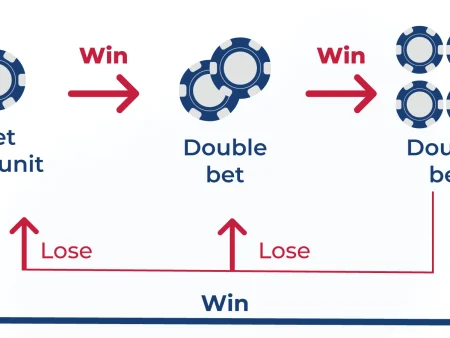
Are you scouring for NFL Week 1 picks against the spread? Dive into the comprehensive NFL point spreads and expert betting predictions for all the 16 opening week games at Bookies.com. Whether you’re eyeing opportunities in NFL, NHL, MLB, or NBA games, understanding the point spread is essential. Point spread betting dominates preferences among bettors for the NFL, college football, NBA, and college basketball. For top-notch guidance and tips on spread betting, keep Bookies.com bookmarked.
Below, uncover the mechanics of point spreads and strategies to maximize your betting efficiency. Our guide includes tailored tips for both football and basketball spread betting to enhance your betting edge.
Understanding the Point Spread
The point spread is designed to balance the competition between the favorite team and the underdog. For instance, if the Philadelphia Eagles host the Miami Dolphins, you might lean towards the Eagles for a win. However, betting sites will apply a point spread, awarding the underdog Dolphins additional points to balance the odds. This spread adjusts as new data emerges throughout the week, aiding sportsbooks in setting the most effective line.
This method is prevalent in football and basketball betting.
How Point Spread Betting Functions
Point spread betting involves adjusting the actual game score by allocating additional points to create a balanced playing field.
Consider an NFL scenario where the Los Angeles Rams host the New England Patriots. You might favor the Rams with Matthew Stafford at the helm. But what if the Patriots start the game with an extra seven points?
That adjustment is the essence of point spread betting, making the matchup and NFL betting odds more equitable. For instance, a typical NFL point spread might be framed as:
- New England Patriots (+7) -110
- Los Angeles Rams (-7) -110
Choosing the Rams on the moneyline might require a $280 bet to win $100. Conversely, a point spread bet allows equal wagering at -110 odds, where a $110 bet could yield a $100 profit for a correct prediction.
The standard -110 betting line reflects the vigorish, or juice, which is the sportsbook’s commission. It ensures the house gains even if the bet is evenly split.
Consequences of Losing a Spread Bet
If you bet on the Rams to cover the point spread (-7) at -110 odds, they need to win decisively. Suppose Stafford leads the Rams to a 28-24 victory—excellent for the Rams but not for your bet. Since they won by only four points, they didn’t cover the spread, and your $110 wager is lost.
Strategies for Betting the Spread
Backing the Patriots (+7) means they don’t have to win; they just need to lose by six points or fewer. If the Patriots lose 28-24, your bet succeeds, turning your $110 wager into a $210 return—comprising your initial bet plus $100 profit.
Advantages of Point Spread Betting
Point spreads create a level playing field in sports betting, making underdogs as appealing as favorites. For instance, in college football, while it’s unlikely you’d choose Kentucky over Alabama outright, a +28 spread for Kentucky could sway your decision. Conversely, even if you’re convinced Alabama will prevail, a moneyline bet might be prohibitive at -500, requiring a $500 bet for a $100 profit. Many bettors find this risk-reward ratio unfavorable. Bookies.com is an excellent resource to understand spread betting further and to access top football picks.
With each team in sports like basketball, football, hockey, and baseball assigned a point spread, the odds theoretically give you a 50% chance of selecting correctly in any given matchup. A winning bet doubles your money, while a loss includes the juice added by the sportsbook.
Furthermore, point spreads enhance the excitement of watching games. For example, if the Packers lead the Lions 28-17 late in a game, the outcome may seem decided. However, if you’ve bet on a 10-point spread, the final minutes can be thrilling.
Point Spread Odds and Line Movements
Point spreads are dynamic, often changing from their initial posting up to game time. Oddsmakers adjust these lines based on various factors like betting patterns, player injuries, or weather conditions.
For example, if the Kansas City Chiefs are initially favored by 3.5 points against the Denver Broncos, but uncertainty about Chiefs QB Patrick Mahomes’ injury arises, the line might shift to Chiefs -2.5. This smaller spread makes the betting less attractive since the Chiefs now need to win by only three points instead of four. Conversely, if Mahomes is confirmed to play, the spread might increase to Chiefs -5, requiring them to win by at least six points.
Timing in Spread Betting
The timing of your bet is crucial. The spread at the time of your wager is what applies, regardless of subsequent changes. Monitoring the NFL consensus page to see where the money is going can also provide insights.
Betting on Point Spreads Throughout the Game
In the NFL, you can place bets on point spreads not just for the full game but also for individual halves and quarters. Live betting, which allows you to bet on the spread as the game unfolds, has become increasingly popular. In-game events like scoring and turnovers can influence live point spreads dramatically.
Key Numbers in Point Spread Betting
In football, the most common margins of victory are 7 and 3 points, due to touchdowns and field goals. These margins occur in about 25% of NFL games. Recognizing this, oddsmakers may use a half-point hook to make a spread more enticing. For example, -6.5 or -2.5 for favorites, or +7.5 or +3.5 for underdogs, can be critical for bettors.
While basketball also has key numbers, they aren’t as definitive as in football. The most common winning margins in the NBA are between 5 and 8 points, leading to the use of hooks like 4.5, 5.5, 7.5, or 8.5. These numbers often come into play with last-second free throws affecting the outcome.
Point Spread Betting Strategies
Point spread betting balances the risk and reward compared to straight moneyline wagers where bettors pick the outright winner regardless of the odds. However, point spread betting demands a more discerning assessment to decide which side will cover.
Considerations for Point Spread Betting:
- Home-field Advantage: The impact of playing at home varies by team. In football, this advantage can be worth between 2 to 4.5 points on the spread. It’s crucial to account for this when making your own predictions.
- Statistical Analysis: In-depth statistics such as yards gained or allowed, red zone efficiency, and turnover ratios in football, or shooting percentages and rebounding stats in basketball, are vital for making informed bets.
- Power Rankings: Many websites provide team rankings based on various criteria. These rankings can be a useful tool for setting your own spread predictions.
- Recent Form: A team’s recent performances can provide more context than overall season records. For instance, a team that lost early games but is on a win streak might be undervalued.
Handicapping Point Spreads
After analyzing these factors, you’ll have a clearer idea of which side of the point spread is more likely to succeed. As you gain experience, you can refine your strategy based on past betting results.
Matchup Analysis: Examining specific matchups, such as a strong passing team against a weak pass defense, can reveal betting opportunities. Similarly, a mistake-prone quarterback facing a team known for interceptions might tilt the spread.
While no strategy guarantees a win every time, achieving a 55% success rate on your picks generally means you’re making a profit.
What is the Spread in Betting?
In point spread betting, sportsbooks list NFL and college football games with a spread, showing the underdog with a (+) indicating additional points they receive, and the favorite with a (-), indicating they must win by more than those points. The spread can shift throughout the week based on betting patterns. Bookies.com often offers free weekly picks against the spread.
How Point Spreads Are Used in Different Sports
While most associated with football and basketball, point spreads are also used in other sports:
- Baseball and Hockey: Here, point spreads are termed “run line” and “puck line” respectively, usually set at 1.5 points. The favorite must win by more than 1.5 points, while the underdog will cover if they lose by fewer than 1.5 points or win outright.
Understanding Spread Betting
The spread is essentially the predicted margin of victory set by oddsmakers, which helps to level the playing field between teams of differing strengths. For the favorite, the spread is a margin they must exceed to “cover” the bet, while for the underdog, they can lose by less than the spread or win outright to cover.
What is the Spread in Football?
Point spreads in football are the primary method for betting on both NFL and NBA games, giving relatively even odds to favorites and underdogs alike. Knowing how to read and interpret these spreads can significantly enhance your betting strategy and potential profits.
Point Spread Betting FAQ
What Does a +7 Spread Mean in Betting?
A +7 spread indicates that the underdog team is receiving an additional seven points in the betting odds. This is denoted with a “+” symbol (e.g., +7). Conversely, a team listed at -7 is considered the favorite and must win by more than seven points to cover the spread.
What Is a “Push” in Spread Betting?
A push in spread betting occurs when the final score lands exactly on the spread number. For example, if a team is favored by three points and wins exactly by three, the bet is a push, meaning the wager is returned to bettors as neither side won.
What Does PK or Pick’em Mean in Spread Betting?
A PK or Pick’em point spread means there is no favorite or underdog, and the spread is set at zero. Bettors simply pick the team they believe will win, with the odds usually set around -110, reflecting the bookmaker’s vig.
What Is an Alternative Point Spread?
Alternative point spreads allow bettors to choose different point spreads at adjusted odds. For example, if the standard spread for a game is Saints -7 against the Buccaneers, an alternate spread might be Saints -6 or Saints -13, offering different risks and rewards.
Examples of Football Point Spreads:
Point spreads are a staple of NFL betting, including the Super Bowl. Historically, spreads have ranged from the Packers (-14) against the Chiefs in Super Bowl I to more recent games like the Chiefs (-1) against the 49ers. In Super Bowl 55, the Bengals were underdogs at +4.5 against the Rams and covered the spread.
Examples of Basketball Point Spreads:
Basketball point spreads, especially on key dates like Christmas Day, reflect the anticipated matchups. For instance, recent Christmas games have included the Hawks at (-6) against the Knicks, the Celtics at Bucks (-6), and the Mavericks vs. the Jazz (-13). These spreads are crucial for betting on NBA games during high-profile events.
How to Read a Points Spread:
To read a point spread, assess the + or – next to a team’s or player’s name. A “+” means that the team or player receives additional points to their final score, which can help even out the betting field. Conversely, a “-” indicates that the team must win by more than the spread number. After adjusting the actual score by the spread, you can determine who covered the spread. Note that it’s possible for a team or player to win the actual game but fail to cover the spread.







